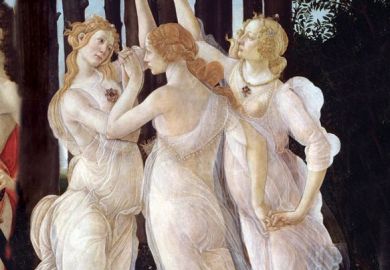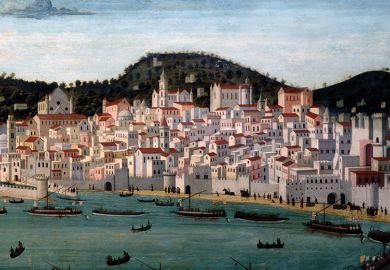A less academic title for this illuminating microhistory of the Jewish goldsmith and Christian convert Salomone da Sesso, and how far he and his family were truly able to integrate into their “host” society of Renaissance Mantua and Ferrara, might be “The Human Cost of Bling”.
Salomone spent his time juggling the insistent demands of that supreme connoisseur and prototype “material girl” of the Renaissance, Isabella d’Este, while simultaneously working as court jeweller for her parents Ercole d’Este and Eleanora of Aragon, Duke and Duchess of Ferrara, and then for their daughter-in-law Lucrezia Borgia. In both cities, he worked and lived as part of well-established Jewish communities. In Ferrara, Herzig has even found evidence that Salomone had his patron pay for 48 meals at a tavern run by “Leone the Jew”, thus suggesting his desire to observe the dietary laws and preserve his religious identity. This makes his subsequent conversion to Christianity, when he took the name “Ercole” in honour of his patron and the surname “de Fedeli” (“the Faithful”), all the more puzzling, until Herzig reveals that all was not quite as it seemed.
An inveterate gambler ever short of money, in 1491 Salomone had got into trouble with Francesco Gonzaga, Duke of Mantua, since he had embezzled some of the gold the duke had provided to make a chain. Although the details are murky, it appears likely that he used the coincidental murder of a young girl to arouse suspicions that members of the Mantuan Jewish community, including several of his creditors, had been involved. In an effort to avoid the fallout, he moved to Ferrara, but such was the resentment of some Mantuan Jews that he was soon charged with sodomy, on the strength of a denunciation by one of them. To escape capital punishment, Salomone had no option but to convert to Christianity and be baptised in the most public of ceremonies in Ferrara cathedral with the duke and duchess as godparents and the entire court in attendance. As Herzig notes, this “trophy conversion” took place before a deliberate policy to persuade Jews to convert was adopted by the Catholic Church, which coincided with the Counter-Reformation.
A combination of increasingly poor health, likely caused by the fumes of working with metals such as mercury and lead, and continued gambling – Salomone/Ercole was addicted to dice – meant that his family became so poor that in 1521 the goldsmith and his sons fatefully repeated the trick that he had once played on Francesco Gonzaga. As before, it was the Jewish community – specifically some pawnbrokers – who made it known to Isabella that he and his son, fellow goldsmith Graziadio/Alfonso, had pledged a valuable ruby and 48 ducats’ worth of gold that she had given them in order to have cuff bracelets made together with other accessories. Only Alfonso was in town and was thrown into jail – and his father (although not his other son, Joseph/Ferrante, who went on to work for Isabella) disappears from the historical record. Since then, he has languished largely unnoticed except by historians of arms and armour, as maker of the so-called “Queen of Swords” for Cesare Borgia, until Tamar Herzig brought her skills to bear on bringing him back to life: one craftsperson’s tribute to another across the centuries.
Simon Ditchfield is professor of early modern history at the University of York and the co-editor of A Companion to Early Modern Rome (2019).
A Convert’s Tale: Art, Crime and Jewish Apostasy in Renaissance Italy
By Tamar Herzig
Harvard University Press, 400pp, £39.95
ISBN 9780674237537
Published 31 January 2020
POSTSCRIPT:
Print headline: Graft and grifting behind the bling
Register to continue
Why register?
- Registration is free and only takes a moment
- Once registered, you can read 3 articles a month
- Sign up for our newsletter
Subscribe
Or subscribe for unlimited access to:
- Unlimited access to news, views, insights & reviews
- Digital editions
- Digital access to THE’s university and college rankings analysis
Already registered or a current subscriber?








